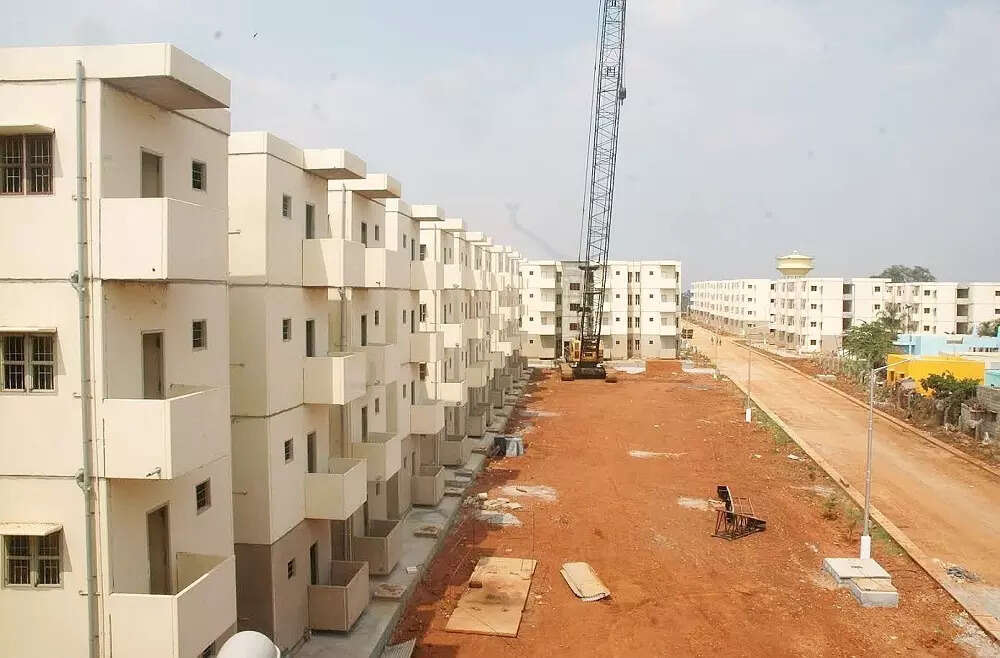Despite decreasing unsold inventory and potential demand, developers are hesitant to launch new affordable housing projects due to low conversion rates, rising construction costs, and unsustainable margins. Post-COVID impacts on lower-salaried employees and the withdrawal of government incentives have further dampened the market, leading many developers to shift away from this segment in Tamil Nadu.
Affordable Housing in India: A Perfect Storm of Rising Costs Threatens the Dream
For many Indians, owning a home remains a deeply cherished aspiration. The government’s push for affordable housing has, in recent years, offered a glimmer of hope to those seeking to climb the property ladder. However, a perfect storm of rising costs is now threatening to derail this progress, leaving developers grappling with challenges and potential homebuyers facing affordability barriers. Let’s delve into the factors contributing to this precarious situation and explore the potential impact on the Indian real estate market.
The Rising Tide: Construction Material Costs Surge
The most significant challenge plaguing the affordable housing sector is the escalating cost of raw materials. Cement, steel, and other crucial construction components have witnessed substantial price hikes in recent months. Several factors contribute to this surge, including global supply chain disruptions, increased demand driven by infrastructure projects, and inflationary pressures across the economy.
Steel, a vital ingredient in construction, has seen particularly sharp increases, impacting project budgets and timelines. Cement prices, too, have added to the burden, squeezing the profit margins of developers already operating on thin lines in the affordable housing segment. This ripple effect translates directly to higher construction costs, making it increasingly difficult to maintain the affordable price point for potential buyers.
Land Acquisition Woes: A Perennial Problem
Beyond construction materials, land acquisition remains a significant hurdle for developers focusing on affordable housing. Suitable land parcels within accessible locations, offering connectivity and basic amenities, are becoming increasingly scarce and expensive. Navigating the complex regulatory landscape and obtaining necessary approvals for land development can be a time-consuming and costly process, further adding to the overall project expenses.
The scarcity of readily available and appropriately zoned land pushes developers to explore locations further away from urban centers, potentially impacting the desirability of the project and increasing the commute time for residents. This can deter potential buyers who prioritize accessibility and proximity to their workplaces and essential services.
Interest Rate Hikes: Making Home Loans Less Accessible
Adding to the woes, the recent series of interest rate hikes by the Reserve Bank of India (RBI) to combat inflation has made home loans more expensive for potential buyers. Higher interest rates translate to increased Equated Monthly Installments (EMIs), further straining the financial capacity of those in the lower income brackets who typically target affordable housing options.
This increase in borrowing costs directly impacts the affordability of homes, potentially reducing demand and forcing developers to reconsider project viability. While government subsidies and schemes aimed at promoting affordable housing provide some relief, the impact of rising interest rates is significant and cannot be ignored.
Labor Costs and Skill Shortages: Contributing Factors
Another often overlooked aspect is the rising labor costs in the construction sector. Skilled labor is becoming increasingly scarce, leading to higher wages and impacting project timelines. Training and upskilling initiatives are crucial to address this shortage and ensure the availability of a qualified workforce to meet the demands of the growing construction industry.
Furthermore, the implementation of stricter labor regulations and compliance requirements adds to the overall cost of labor, further impacting project budgets and profitability.
The Impact on Developers and Homebuyers
The combined effect of these rising costs is placing immense pressure on developers focusing on affordable housing. Many are forced to either absorb the increased costs, potentially impacting their profitability, or pass them on to buyers, making homes less affordable.
This can lead to project delays or even cancellations, further exacerbating the housing shortage. Homebuyers, particularly those from lower income groups, are facing increasing challenges in realizing their dream of owning a home.
Looking Ahead: Solutions and Strategies
Addressing the challenges facing the affordable housing sector requires a multi-pronged approach.
* Government Intervention: The government can play a crucial role by streamlining approval processes, providing incentives for developers focusing on affordable housing, and offering subsidies to homebuyers. Exploring innovative construction technologies and materials that can reduce costs is also essential.
* Industry Collaboration: Collaboration between developers, suppliers, and financial institutions is crucial to find cost-effective solutions and navigate the challenges. Sharing best practices and adopting innovative construction techniques can help optimize efficiency and reduce costs.
* Focus on Sustainability: Promoting sustainable construction practices and using locally sourced materials can not only reduce environmental impact but also help control costs.
* Skill Development: Investing in skill development programs and training initiatives to create a skilled workforce can address labor shortages and improve productivity.
* Financial Inclusion: Expanding access to affordable financing options and exploring innovative mortgage products can help more people realize their dream of owning a home.
The challenges facing the affordable housing sector are significant, but not insurmountable. By adopting a proactive and collaborative approach, stakeholders can work together to overcome these hurdles and ensure that affordable housing remains a reality for all. Addressing rising costs, streamlining processes, and promoting innovation are crucial to sustaining the momentum and realizing the vision of “Housing for All.” The future of affordable housing in India depends on the collective efforts of the government, developers, and other stakeholders to create a sustainable and equitable housing ecosystem.







